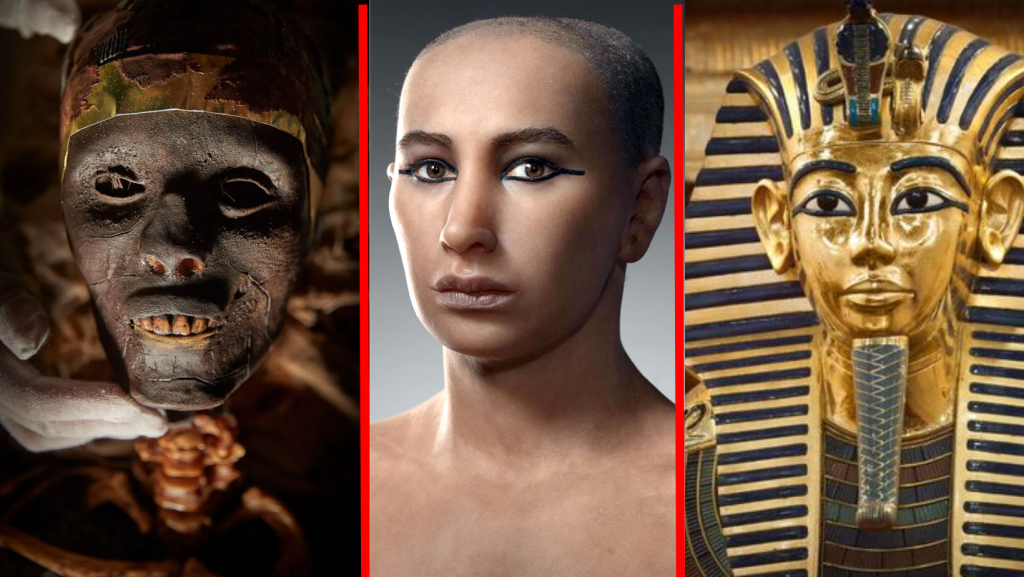Western civilization has always had a fascination with the civilization which grew up along the Nile River around 3,000 BC. Greek intellectuals, such as Thales, visited Egypt and were enamored by the design and mathematical exactness of the shape of the pyramids. For millennia, ancient Egypt has been considered synonymous with wisdom by the civilizations of the Mediterranean basin, but especially the West.
One text that reveals an example of that wisdom is the Rhind papyrus, a document that appears to be an otherwise mundane primer on mathematics. But much of what scholars know of Egyptian mathematics comes from this text.
Discovery and Use of the Rhind Papyrus
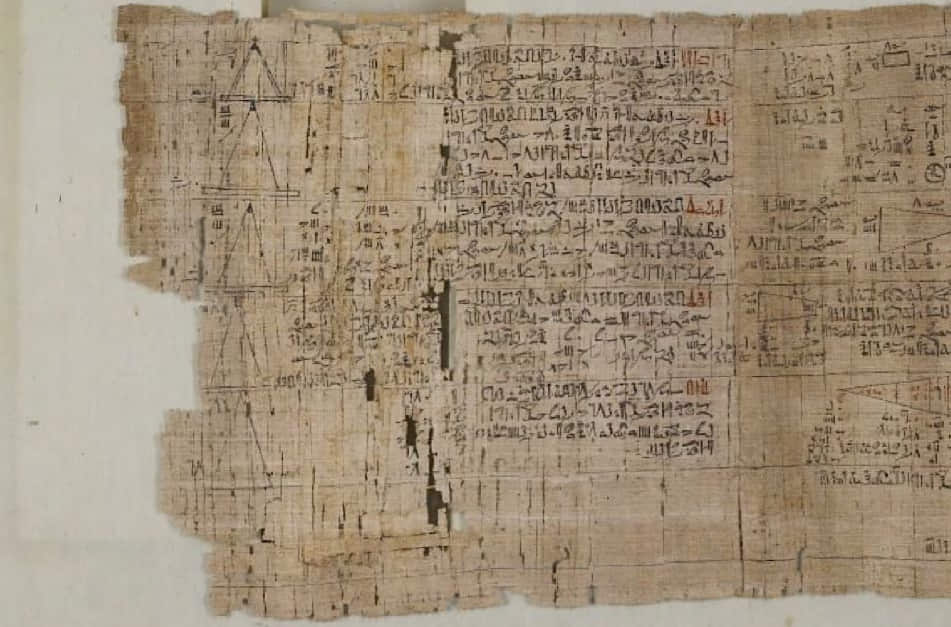
The Rhind papyrus is a document dating to around 1,650 BC. It was found and purchased by Alexander Henry Rhind in 1858 from a Nile town in Egypt. The papyrus text is currently in the British Museum.
When it was first examined by scholars, it was found to be a mathematical document. It was written by a scribe by the name of Ahmes and consists of a series of practice problems for novice scribes.
The mathematical problems reveal important information about how ancient Egyptians worked with multiplication, division, and fractions. Because the name of its original author is known, the Rhind papyrus is also occasionally referred to as the Ahmes papyrus.
Historical Background of Egyptian Mathematics
Ancient Egypt was one of the first relatively advanced, centralized civilizations to emerge in the ancient Mediterranean region, and probably the world. It has its origins with farming communities that emerged along the Nile river. Most of Egypt is a desert, but the Nile provides a long narrow strip of arable land.
The Nile flows through limestone hills into a floodplain. It eventually ends in the Nile River delta which fans out into the Mediterranean Sea. Regular flooding along the Nile makes the land around the river especially fertile for growing crops. The fertile soil is one of the main reasons that Egypt was destined to become a center of civilization with the rise of agriculture.
There are many reasons that the ancient Egyptians needed to learn mathematics. One was related to agriculture and the seasons. Because Egyptian farmers relied on the regular flooding of the Nile, it was helpful to know when the floods would come so that farmers could prepare. For this reason, the ancient Egyptians taught themselves astronomy.
Egyptian priests eventually realized that the flooding season was heralded by the heliacal rising of the star Sirius. Because of this, the Egyptians were very careful to observe the motion of Sirius. Egyptian priests eventually used these calculations to create the Egyptian calendar.
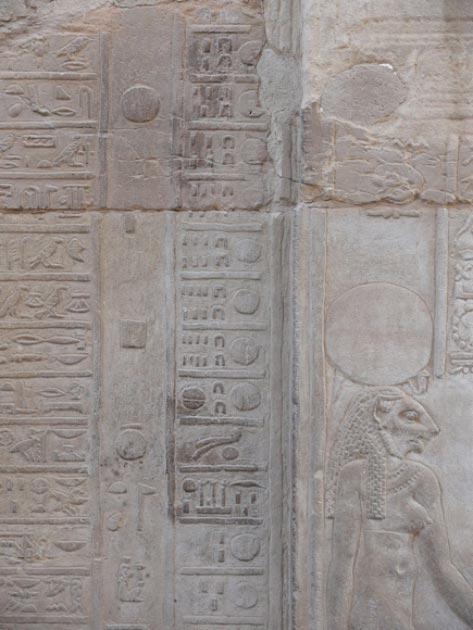
A section of the hieroglyphic calendar at the Kom Ombo Temple, displaying the transition from month XII to month I. (Ad Meskens / CC BY-SA 3.0)
Another reason that mathematics was important to Egypt, and ancient civilizations in general, was maintaining a complex society. The ancient Egyptian government needed to keep track of taxes and trade and it relied on a class of professional scribes.
These scribes, in addition to learning to read and write, also had to learn mathematics. Most of what is known about how the Egyptians did mathematics is revealed in the Rhind papyrus and similar documents.
Egyptian Mathematics as Revealed in the Rhind Papyrus
Ancient Egyptians don’t appear to have thought abstractly about numbers. For example, if you mentioned the number 7 to an ancient Egyptian, she would probably first think of a grouping of 7 objects rather than the concept of the number 7. For the ancient Egyptians, numbers were quantities of physical objects rather than abstractions which existed separate from the objects that they described.
Nonetheless, the ancient Egyptians were very adept in using arithmetic to accomplish tasks in accounting and engineering. Egyptian numerals, like Roman numerals, are closely tied to the Egyptian writing system.

Egyptian numerals as found in the Rhind papyrus. (Drutska / Adobe Stock)
Egyptian hieroglyphs probably evolved from pictures used to represent words or ideas. Over time, they evolved into symbols representing the sounds of words.
Hieroglyphs consist of symbols that both represent words and the sounds of words. For example, the word “belief” in English could be represented with a picture of a bee and a picture of a leaf, forming bee-leaf which, of course, sounds out the word “belief”.
Hieroglyphs are used in this way so that symbols representing the sounds of words can be used to spell out whole sentences. Hieroglyphic symbols can also have multiple meanings. For example, the picture of an ear might mean both “ear” and “sound”.
As Egyptian society became more complex, there was a need to record tax receipts, trade transactions, calculate how much material was needed to construct a temple, and other tasks requiring mathematical calculations. Hieroglyphic symbols, as a result, came to represent numerical quantities as well. The Egyptians had a base-10 number system.
They had a separate symbol for 1, 10, 100, etc. There was a blockier numeral system that was used in inscriptions on stone monuments and in formal documents. A more convenient, abbreviated set of numerals was also used by scribes when writing records on papyri.
Compared to Arabic numerals, which are used in most of the world today to perform mathematical operations, the Egyptian numeral system has limitations in what mathematical problems can be easily solved using the system. For example, it is difficult to represent or work with very large numbers using Egyptian numerals.
The highest numerical value represented by a single Egyptian numeral is 1 million. If a mathematician wanted to represent 1 billion using Egyptian numerals, it would be very cumbersome and annoying since he would have to write the symbol for 1 million a thousand times or invent a new symbol. This might work at first but what if it was necessary to represent a trillion or a quadrillion?

In Egyptian mathematics multiples of these values were expressed by repeating the symbol as many times as needed. (BbcNkl / CC BY-SA 4.0)
Calculating very large numbers is impractical using Egyptian numerals because very large numbers are cumbersome to represent, and a new symbol must be invented every time numerical values become too large to be practically represented using current symbols. In this way, the Egyptian numeral system is less flexible than a system like the Arabic numeral system in which the same ten symbols can be used to represent a number of any size.
It would also have been difficult to do algebra using Egyptian numerals. Egyptian numerals lack specific symbols for infinity or negative numbers, for example. The reason for these limitations in Egyptian numerals is probably because ancient Egyptian scribes did not need to work with negative numbers, infinity, or very large numbers.
Egyptian scribes were mainly concerned with solving mathematical problems in trade transactions, accounting, and engineering projects that don’t necessarily require mathematics more advanced than geometry and arithmetic. The ancient Egyptians would have had trouble dealing with numbers larger than 1 million, but they typically didn’t need to since it was probably rare that they encountered numbers that large in their regular work. The ancient Egyptians were also ingenious in devising methods of multiplication, division, fractions, and other mathematical operations that involved only addition and subtraction for which Egyptian numerals are easy to use.
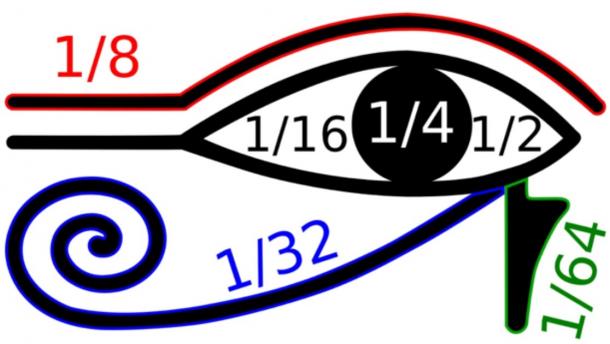
Isolated parts of the “Eye of Horus” symbol were believed to be used to write various fractions. (BenduKiwi / CC BY-SA 3.0)
Like other cultures, the ancient Egyptians had their own traditions and methods for solving mathematical problems that don’t necessarily correspond to those used in the modern West. Addition and subtraction are simple and straightforward in Egyptian mathematics.
They simply involve adding or taking away numerals of different numerical values until a number is reached. If a scribe wanted to add 20 to 76 to make 96, he would simply add up the proper symbols.
The Egyptian approach to multiplication and division involves making a table of multiples and using it to make a series of addition and subtraction operations. For example, to multiply 15 by 45, a table is made with a series of numbers that are successively doubled starting with 1 in one column.
The successive doubling continues until 15 is reached. The second column consists of multiples of 45 corresponding to the numbers in the first column. This is illustrated in the table below.
Since 16 > 15, we only need to go up to 8 in Column 1. The values in Column 2 are going to be multiples of 45 multiplied by corresponding entries in Column 1. Once the table has been made, numbers in Column 1 that sum to 15 are marked.
In this case, 1+ 2 + 4 + 8 = 15. Since all the entries in Column 1 are needed to arrive at a sum of 15, all the entries in Column 2 are summed. 45 + 90 + 180 + 360 = 675. Thus, 15 times 45 is equal to 675. Division is the same but in reverse.
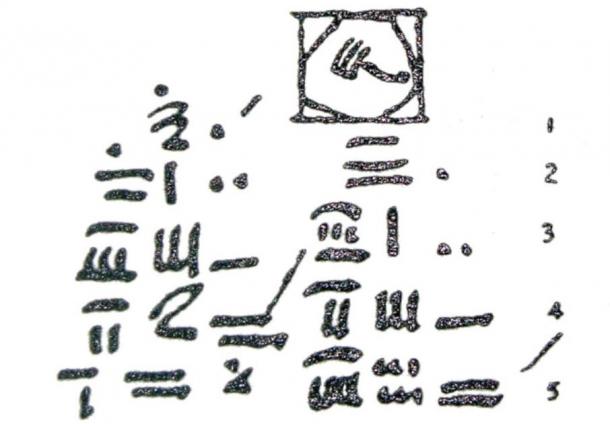
Egyptian math problem from the Rhind papyrus. (Bakha~commonswiki / Public Domain)
Fractions were important in the ancient world for trade transactions. In ancient Egypt, fractions were also represented differently than they are today. For example, 2/5 was written as 1/3 + 1/15. The fractions also had to always be represented as unit parts or fractions with a numerator of 1.
Mathematics and the Ancient Egyptian Worldview
Although the ancient Egyptians are known for impressive feats of engineering and astronomical computations using mathematical calculations, the Egyptians did not add much to the field of mathematics itself. They were not necessarily much more advanced than surrounding civilizations in terms of their mathematical knowledge.
The Egyptians created calendars, built pyramids and temples, and managed one of the first and most long-lasting civilizations in history using mostly basic arithmetic and geometry. There is little evidence that they did much to come up with concepts or ideas about mathematics that were unknown to other civilizations at the time.
The Egyptians made use of special numerical relations such as the golden ratio. There is, however, little evidence that ancient Egyptian scribes recognized their significance.
Ancient Egyptians simply found that these ratios were useful in constructing monuments. There is scant evidence that they cared about or recognized the theoretical implications of the golden ratio.
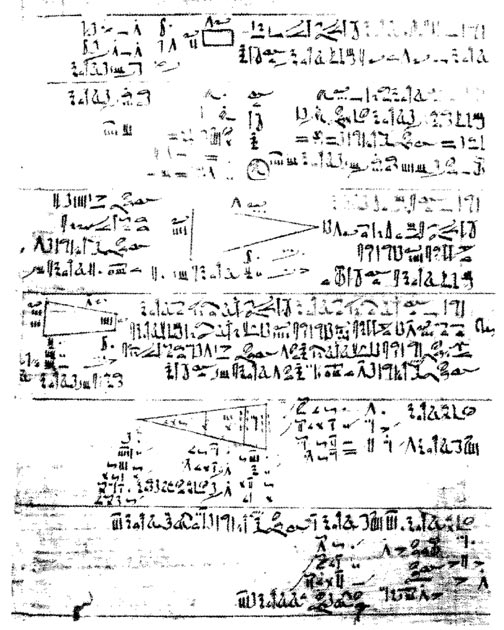
Rhind papyrus displaying Egyptian mathematics. (Luestling~commonswiki / Public Domain)
Although it is possible that there were native Egyptian equivalents to Thales and Euclid, the historical record implies that Egyptian culture appears to have been more concerned with the practical applications of mathematics than the theoretical concepts in mathematics. Science and mathematics were for practical endeavors such as engineering, accounting, and making calendars.
This attitude towards mathematics may indicate an important difference between the way that ancient Egyptians and most ancient cultures saw the world and the way that some of the Greek pre-Socratic philosophers across the Mediterranean were beginning to see the world in the 6th century BC.
The ancient Egyptians, like other ancient civilizations, explained the world through mythology. Mythology differs from science in that it looks for relationships and teleology to explain the world.
Mythology doesn’t ask about how the sun shines or about its composition. Mythology asks what the ultimate purpose of the sun is and what it means for humanity and the gods.
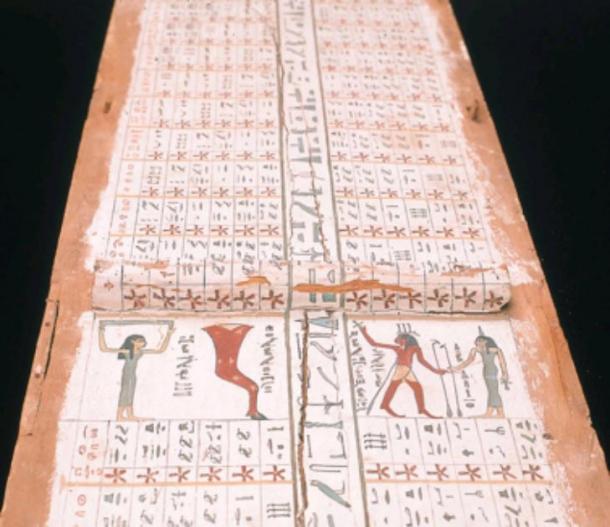
Egyptian Middle Kingdom star chart. (NebMaatRa / GNU General Public License)
A scientific worldview, on the other hand, is more interested in description and processes. Numbers typically do not tell you what motivates the gods to send rain so that crops can grow.
They also do not explain the motivation of the sun god crossing the sky to bring light to the world, but they do describe how the sun moves and the atmospheric conditions necessary for rain. Numbers do not explain meaning and purpose, but they do describe processes and mechanisms.
Science asks, “What is the universe and how does it work?” Mythology asks, “Why is there a universe and what does it mean to me, my family, my community, my people, and my gods?”
The reason some ancient Greek philosophers were so interested in numbers may have been in part because they were interested in describing the physical world and the processes governing it. They were beginning to have a scientific or proto-scientific worldview.
The ancient Egyptians, on the other hand, had a primarily mythological worldview. Numbers described the world, but not the part of the world in which they were most interested.
To adapt a quote attributed to Galileo Galilei, the ancient Egyptians were asking the question, “How do you go to heaven?” The pre-Socratic Greek philosophers, who visited Egypt, were asking, “How do the heavens go?”
Directly or indirectly, the ancient Egyptians had a significant influence on Western and Islamic civilization. Because of this, much of the modern world is indebted to the ancient Egyptians and their scribes who were able to build the pyramids and run imperial economies with less mathematical knowledge than a modern middle school student.





